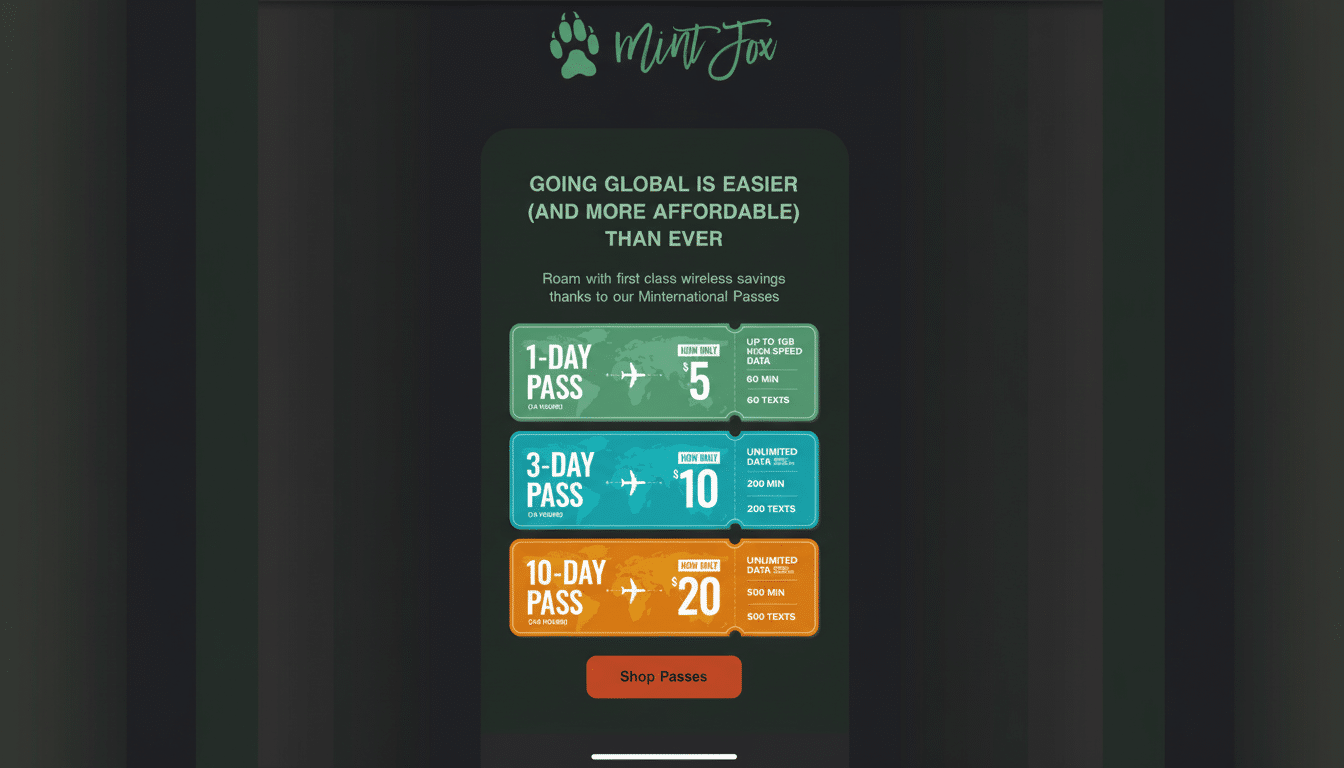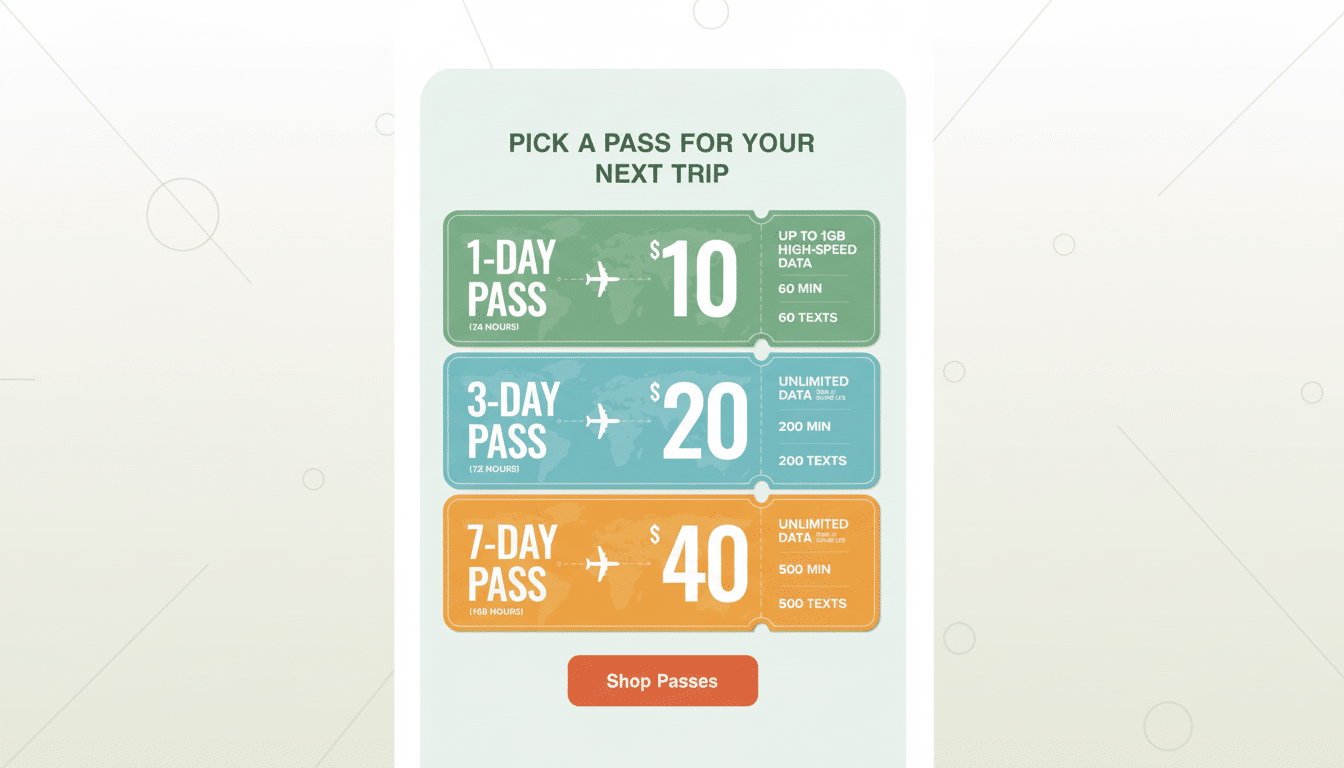Mint Mobile’s international roaming has transformed from complicated add-on credits to a simple Minternational Pass. For travelers, a more concise question would be: How does it translate to the experience, and is it worth paying for as opposed to alternatives? Here’s a straightforward, professional examination of what the service offers — along with the fine print and any hidden costs.
How Mint Mobile international roaming works and what to expect
Mint offers passes that bundle data, calling, and texting on partner networks in hundreds of destinations. The 1‑Day Pass is available for $5 and offers 1GB of high-speed data, along with 60 minutes of talk and 60 texts. The 3‑Day Pass costs $10 and provides 3GB of data, along with 200 minutes and texts. There is also a 10‑Day Pass with 10GB of data and 500 minutes and texts.

There are no surprise overages once a pass is active — service simply stops when you reach your limit or run out of time. That is a relief compared with legacy postpaid roaming, which could quietly generate costly charges. Coverage and speed are determined by which local carriers have deals with Mint. In many markets, you’ll see LTE; in some cities, 5G — but performance really does vary. Note: Independent testing from firms like Opensignal regularly reveals wide gaps between countries, so manage expectations.
Activation is done in the Mint app: buy a pass, turn on data roaming on your phone, and you’re live when you land. Wi‑Fi Calling is available and works wherever you have Wi‑Fi, which can help increase your coverage in buildings and other areas of poor cellular signal strength. It works across the globe with few exceptions (such as Japan), but there are places where local carriers don’t support Wi‑Fi Calling on iPhone due to carrier agreements.
What you get in Canada and other perks of the pass
There is one important carve‑out: Mint provides free roaming in Canada, with unlimited talk and text and 3GB of data every month. That’s a standout benefit many budget rivals don’t offer if you’re hopping over the border often.
Mint also brings free international calling and texting to Mexico and Canada, free texting to 150+ countries, and discounted international calling to all other markets with per‑minute rates that vary by destination. If you know you won’t need data overseas, a 30‑day calling and texting pass with 100 minutes and (yes) 100 texts may keep you reachable without paying for gigabytes that would go to waste.
Real‑world costs and use cases for Mint roaming passes
Mint’s passes, then, are most effective on short trips. A weekend city break can cost you as little as a $5 pass if you are careful, or a $10 3‑day pass, which gives you breathing room for maps, ride‑hailing, and photo sharing. For a one‑week work trip, the 10‑day option is a straightforward way to avoid micro‑managing allowances.
On longer trips, costs can mount quickly. Piling a few short passes together for a two‑ to four‑week vacation can easily run over $60 — before your usual plan kicks in. If you burn through a lot of data — for navigation, social video, or cloud photo backups — the pass allowances might feel small. According to Ericsson’s Mobility Report, smartphone users in North America are averaging well over 20GB a month; even if you use only a fraction of that overseas, you’ll burn through a 1GB or 3GB pass in no time.

One good benchmark: casual tourists who keep to messaging, email, maps, and occasional browsing typically go through 1–3GB a week when mindful about Wi‑Fi. Streaming music or short videos can more than double that. Downloading offline maps ahead of time and backing up photos over hotel Wi‑Fi can substantially cut down on pass burn.
Setup steps and data‑saving tips for Mint’s roaming passes
Prior to leaving, refresh apps over Wi‑Fi, download offline maps, and disable background refresh for apps that consume a lot of data. When you get there, switch on data roaming, prefer Wi‑Fi Calling for voice where possible, set streaming to SD, and back up photos only on Wi‑Fi. Hotspot use, however, can eat up allowances rapidly; use judiciously.
If speeds are inconsistent, try toggling 5G/LTE or manually selecting a roaming partner. Monitor your pass timers in the app — time windows are rigid and can prevent usage, even if you have leftover data.
Is Mint Mobile international roaming worth the hassle?
For those who travel every once in a while and tend to take short trips: Yes. The Minternational Pass is straightforward, predictable, and budget‑friendly for a brief trip overseas — especially considering the added costs of roaming in Canada with other carriers. It’s a simple add‑on that prevents the bill shock we used to experience with traditional roaming solutions.
If you’re a frequent flier, taking week‑long trips to the middle of nowhere, for example, continue your search elsewhere. Google Fi Wireless offers abundant international data on its top plan in 200+ destinations, while US Mobile’s highest tier comes with 10–20GB of roaming usage, so they’re better long‑haul values. Local eSIMs are another great shout; GSMA Intelligence points to rapid eSIM growth around the world, and travel eSIMs often provide region‑specific rates that undercut pay‑as‑you‑go roaming.
Bottom line: Mint Mobile’s international roaming is a nice safety net and value play for short stints. If your passport sees heavy use, a carrier with baked‑in global data or a region‑specific eSIM will probably be cheaper and relieve the stress of rationing gigabytes.

